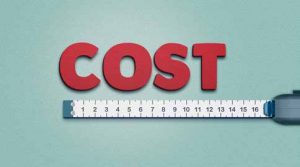 (Reuters Health)—About a quarter of the dollars spent on healthcare in the U.S. may be wasted, a new analysis suggests.
(Reuters Health)—About a quarter of the dollars spent on healthcare in the U.S. may be wasted, a new analysis suggests.
Six types of waste in healthcare could be costing as much as $935 billion annually, according to the study published in JAMA.1,2
The biggest source of waste is “administrative complexity,” says the study’s lead author William Shrank, MD, chief medical officer at Humana Inc., a for-profit U.S. health insurance company based in Louisville, Ky.
In layman’s terms, it’s the “work around the office that is not focused on care, but on administrative requirements for someone to get care,” Dr. Shrank says. “I think physicians feel pretty deeply mired in it.”
Dr. Shrank and his colleagues determined that money wasted through administrative complexity, which includes billing and coding waste and physician time spent reporting on quality measures, totaled around $265 billion annually. Other big sources of waste, Dr. Shrank says, involve excessively high prices, adding around $235 billion per year, and poor coordination of care—costing $27.2 billion to $78 billion annually.
Dr. Shrank isn’t daunted by the task of rooting out waste. “There’s no reason we shouldn’t see meaningful progress in all three of these areas,” he says.
To get a sense of how much money was going to waste in the healthcare system, the researchers scoured the medical literature looking for studies and reports that assessed costs and waste. Ultimately, the researchers settled on 54 publications that included information on six areas previously identified by the National Institute of Medicine as important in quantifying waste: failure of care delivery; failure of care coordination; overtreatment or low-value care; overpricing of treatments and medication; fraud and abuse; and administrative complexity.
Along with the money being wasted through administrative complexity and poor coordination of care, the price-tags for other sources of waste included: $102.4 billion to $165.7 billion for failure of care delivery; $230.7 billion to $240.5 billion for overpricing; $75.7 billion to $101.2 billion for overtreatment or low-value care; and $58.5 billion to $83.9 billion for fraud and abuse.
The new report is “important,” says Albert Wu, MD, an internist and professor of health policy and management at the Johns Hopkins Bloomberg School of Public Health, Baltimore. “It confirms not only that the U.S. spends more on healthcare than any other country, but that it also wastes more than any other country.”
All that wasted money could be put to good uses, such as insuring the uninsured, if the wastage could be prevented, Dr. Wu says.
“Unfortunately, we have made very little progress over the last 10 years when a focus was first put on this problem and there are a lot of reasons for that,” Dr. Wu says. “Our healthcare financing is increasingly byzantine and complex, and it’s been resistant to attempts to change that. Part of the reason is that there are many who benefit from the money that is being wasted: One person’s waste is another person’s income.”
A major improvement could be made if waste tied to administrative complexity could be cut, Dr. Wu says, noting that while administrative costs make up an estimated 15% of total costs in private insurance, with Medicare those costs are just 5%.
“This suggests at least a partial solution would be to expand Medicare or some variant of that model,” Dr. Wu says.
And now may be the right time to make some big changes, Dr. Wu says. “The elections of 2018 suggested that the American public has an increased appetite for good and affordable healthcare for all,” he adds.
References
- Shrank WH, Rogstad TL, Parekh N. Waste in the U.S. healthcare system: Estimated costs and potential for savings. JAMA. 2019 Oct 7. doi: 10.1001/jama.2019.13978. [Epub ahead of print]
- Lum F, Lee P. Waste in the U.S. healthcare system—insights for vision health. JAMA Ophthalmol. 2019 Oct 7. doi: 10.1001/jamaophthalmol.2019.4647. [Epub ahead of print]